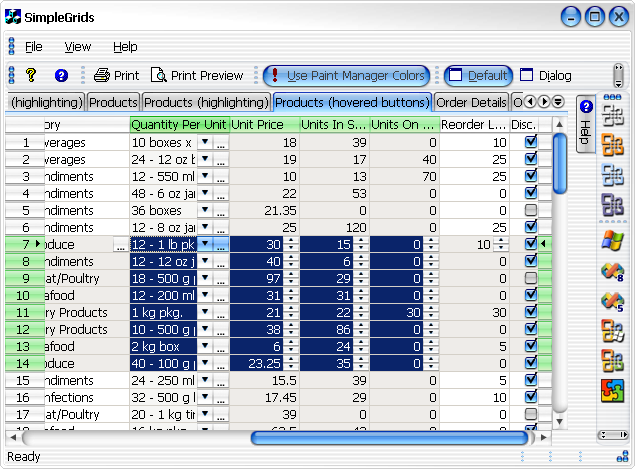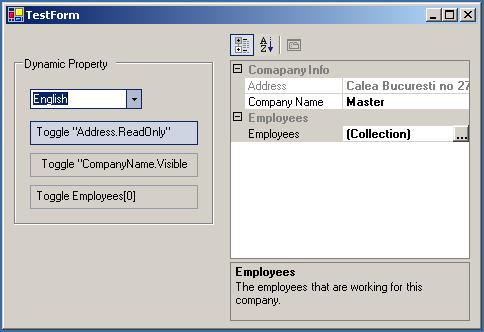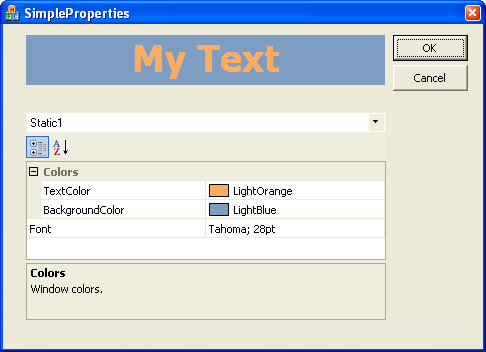

If an application using the InkEdit control is being developed on an operating system that does not support pen input, the InkMode property will be set to Disabled, and this can not be changed via the Visual Studio property grid.
#Mfc propertygrid control windows#
These controls ship with the Windows SDK for Windows Vista, and can be added to an existing project by simply selecting the Choose Items item from the Toolbox context menu and adding the two controls as shown in Figure 3.įigure 2: Ink Integration on a MFC Dialogįigure 3: Adding the controls to the Visual Studio Toolbox The InkEdit control allows an end user to ink directly onto the controls surface (which is an extended rich edit control), and once the ink input has been completed, the ink is converted to text, as shown in Figure 2. To provide a more natural interface for ink input, native developers can use one of two COM controls to capture ink. This Input Panel allows input across a variety of controls for most applications running under Vista, and for legacy applications that don’t use owner-drawn controls, provides a reasonable experience when working with a pen.įigure 1: Ink Input into a Legacy Application End users can use a pen or mouse to write in the Input Panel, as shown in Figure 1, and when the desired text has been entered, the ink will be converted to text and moved into the Edit control. Figure 1 shows a simple MFC console application with a standard Edit control running on Windows Vista Ultimate, which includes ink input support.

Inking in MFCīefore covering the new Ink controls, it is worth briefly covering the end-user experience for a traditional application that was designed without ink integration in mind. A lot of the functionality mirrors managed controls of similar names available in the Microsoft.Ink assembly, and developers should be careful when reading documentation related to Ink input because it often can be unclear whether the documentation is referring to managed or native components.

#Mfc propertygrid control code#
This article will focus on a simple task-retrofitting an existing MFC application to take advantage of writing and drawing in ink, but the opportunity to integrate with ink for native code is much richer. With the release of Windows XP TabletPC Edition 2005 and now expanded with Windows Vista, native developers have a rich library of controls that they can use to integrate with pen and touch digitizers. NET to COM interoperability as the primary means of integrating ink into their application. Because of this focus on managed development, the initial APIs for integrating ink were almost exclusively managed, leaving native developers with the headache of using. NET Framework were being pushed as the future of development. The advent of the TabletPC and ink integration of the Windows operating system occurred at a time when managed development and the.


 0 kommentar(er)
0 kommentar(er)
